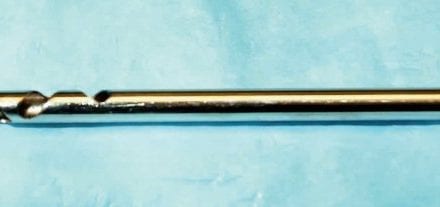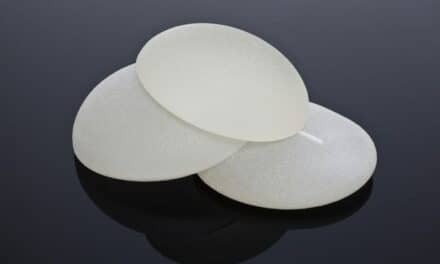 |
Plastic surgery researchers and companies have been developing novel ways for artificial tissue regeneration for wounds and ulcers that are difficult for the body to repair naturally.
Most recently, Mesynthes, a Wellington, New Zealand-based company, filed a 510(k) application with the FDA for its Endoform Dermal Template™, a tissue-regeneration template and wound-healing product for use in the treatment of chronic wounds, such as diabetic foot ulcers.
Endoform is a proprietary extracellular matrix (ECM) material that retains high levels of innate biologic macromolecules, which are known to promote cell proliferation and vascular ingrowth. In addition, Mesynthes is developing the same medical technology for other plastic surgery applications, including aiding in breast reconstruction after cancer surgery.
Several features make the Endoform system different from other artificial tissue-regeneration techniques. Whereas Endoform is not derived from the dermis, it is created from the propria-submucosa layers of the ovine (sheep) forestomach, a tissue whose structure is similar to the dermis and inherently very strong.
 |
 |
| Brian Ward |
“We know ECM proteins are highly conserved and homologous between species and that the immune response to xenografts is very similar,” says Brian Ward, BVSc, CEO of Mesynthes. “This opens up a new source of safe, readily available, high-quality material. Also, Endoform’s ovine origin avoids the risk of cultural or religious offence, which is an issue for products of human, bovine, or porcine origin.”
The company also reports that the ovine origin of Endoform, combined with New Zealand’s disease-free status and its proprietary purification and sterilization processes, ensure the safety of Endoform and its other products.
Endoform is designed to enhance the body’s own healing process. “With the approach that we’ve taken, we wanted to ensure that Endoform retained the authentic complexity of the ECM to preserve its native biology and maximize the regenerative response,” Ward says. “Tissue regeneration is driven by cell-matrix interactions, so while collagen is important, so is the mix of other biological components.”
In addition, Endoform is designed to retain the ECM’s structural proteins collagen I and III and elastin, Ward adds, as well as the adhesive proteins laminin, fibronectin, and collagen IV; the growth factor FGF2; and the glycosaminoglycans heparin sulfate and hyaluronic acid.
 |
Endoform’s so-called “authentic complexity” delivers architecture, signals, and substrates directly to the wound to attract host cells and support tissue repair and remodeling with minimal scarring.
“The result is that Endoform initially provides structural architecture to allow cell migration, proliferation, and differentiation, allowing the deposition of new matrix and supporting tissue regeneration,” Ward says. “Then, over time, it’s completely replaced by the patient’s own tissue.”
The Endoform product is applied essentially as a wound dressing, or in the same way that a skin substitute is applied. It is subsequently rehydrated and covered with a nonadherent dressing, then secured in place. In addition to treating small wounds, the Endoform matrix is also available in larger formats for more extensive wounds.
NEW DERMAL TEMPLATE
“Our first product, Endoform Dermal Template, uses our technology in a very simple format, but we’re also seeing opportunities to apply it in implantable devices, particularly in reconstructive plastic surgery, postmastectomy,” Ward says.
| |
See also “What to Use and When to Use It.” by John Flynn, MBBS, Dip RACOG, FRACGP, Dip.P.Derm (UK) FACCS, in the October 2008 issue of PSP. |
|
plasticsurgerypractice.com |
|
Ward says that the firm will also file a separate 510(k) for Endoform Regenerative Template, its implantable product.
This latter product is designed to be very convenient for the surgeons to use and secure, Ward says. “It’ll save operating time, help surgeons improve the quality of their surgical repair, improve the aesthetic outcome for patients, and we are confident that we can position this product so that it’s competitively priced.”
Tor Valenza is an associate editor of PSP. He can be reached at [email protected].





